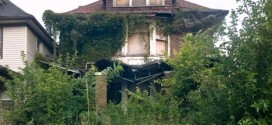Prices increased on a month-over-month basis in 253 of the top 300 markets, fewer than 293 in July, according to Homes.com’s Local Market Index for August.
The downtrend in the number of markets that gain monthly is likely due to both seasonal trends and the state of recovery for these markets. Of the 47 markets that saw declines last month, 40 percent have fully recovered their decline in home prices from the housing bubble, while another 28 percent were found to be unaffected by the boom-bust scenario, illustrating that the weakness is a result of leveling off in home prices.
As a complement to Local Market Index, Homes.com publishes an exclusive Rebound Report, highlighting how the housing recovery process is unfolding across the country. It measures each market’s peak-to-trough decline in index value, which had been attributed to the bursting of the U.S. housing bubble.
Rising home values in the third quarter saw four more top 100 markets reach full recovery. More than a quarter of the top 100 real estate markets have now fully recovered the value they lost in the housing crash. Nearly half of the remaining markets have recovered 50 percent of their lost value, increasing by four markets from the previous month.
Twenty-two midsized markets showed little to no effect from value lost in the 2007 housing bubble and experienced more stable changes in index values. Half of those 22 bubble-proof markets are from Texas, and more than 70 percent are from energy producing states where typical housing boom-bust scenarios did not occur. The remainder of midsized markets showed 51 markets, or 29 percent, with a 100 percent recovery and 94 markets with a 50 percent or more recovery.
“We found the effects of the housing boom-bust lingering in some areas because of the instability they suffered and the long, steep price slope needed for rebound. While these particular markets are improving somewhat, higher rates of negative equity increase risk of foreclosure and can lock move-up buyers-who are also sellers-out of the marketplace, thus slowing overall recovery in certain local areas. Yet other markets that did not experience the bursting bubble to the same degree are in a better position to take full advantage of the recovery. Their prices are appreciating faster, and they are rebounding earlier,” said Brock MacLean, executive vice president of Homes.com. “The important thing to realize is that all markets are in some form of recovery, and different factors contribute to recovery scenarios across the country. With data from the top 300 markets, the Homes.com Local Market Index and Rebound Report analyze trends in local communities where millions of Americans live-key trends missed by other real estate reports.”
The latest Homes.com Local Market Index reports the following:
- Year-over-year increases in all top 300 markets.
- Monthly increases in 89 of the top 100 markets and in 164 of the 200 midsized markets.
- Honolulu, Hawaii remains the top gaining market on a year-over-year basis with a 25.19 index point or 11.32 percent increase.
- California markets [Los Angeles-Long Beach-Santa Ana, Calif.; San DiegoCarlsbad-San Marcos, Calif., San Francisco-Oakland-Fremont, Calif.; OxnardThousand Oaks-Ventura, Calif.] are the remaining 4 in the top 5. They increased 24.97, 24.75, 24.57 and 18.43 index points, respectively, but are only an average of 31 percent back to recovery.
- Nine of the top 10 monthly gaining markets from the top 100 are in the West, up from 6 in the previous month.
Highlights from the Homes.com Rebound Report for the top 300 markets show:
- 77 have made more than a 100 percent rebound, indicating a complete recovery in these markets. This is an increase from 64 markets in the previous reporting period.
- The 13 newest markets to achieve a full rebound are Buffalo-Niagara Falls, N.Y.; Rochester, N.Y.; Louisville/Jefferson County, Ky.-Ind.; Albuquerque, N.M.;
Asheville, N.C.; Roanoke, Va.; Binghamton, N.Y.; Burlington-South Burlington, Vt.; Springfield, Ill.; Oshkosh-Neenah, Wis.; Statesville-Mooresville, N.C.; Pueblo, Colo.; and Rocky Mount, N.C.
- 143 show more than a 50 percent rebound, up from 132 markets in the previous month.
- 74 percent (57) of the 77 fully rebounded markets gained less than 2 percent, while 19 reported minor losses by 1 index point or less. This illustrates the seasonal downtrend in the housing market along with a leveling of home prices.
- 22 markets were not affected by the boom-bust scenario of the U.S. housing bubble. These markets did not experience the same peak-to-trough decline displayed by the remaining 278 markets. All of these markets are midsize markets, with half from the state of Texas and 73 percent from energy producing areas. They include: Brownsville-Harlingen, Texas; Killeen-Temple-Fort Hood, Texas; Shreveport-Bossier City, La.; Anchorage, Alaska; Fayetteville, N.C.
- Charleston, W.Va.; Lubbock, Texas; Cedar Rapids, Iowa; Amarillo, Texas; Waco, Texas; College Station-Bryan, Texas; Longview, Texas; Tyler, Texas; Fargo,N.D.-Minn.; Jacksonville, N.C.; Monroe, La.; Waterloo-Cedar Falls, Iowa; Abilene, Texas; Iowa City, Iowa; Wichita Falls, Texas; Sioux City, Iowa-Neb.S.D.; and Midland, Texas.
 RealEstateEconomyWatch.com Insight and Intelligence on Residential Real Estate
RealEstateEconomyWatch.com Insight and Intelligence on Residential Real Estate

Yes! Finally someone writes about fayetteville homes for sale.